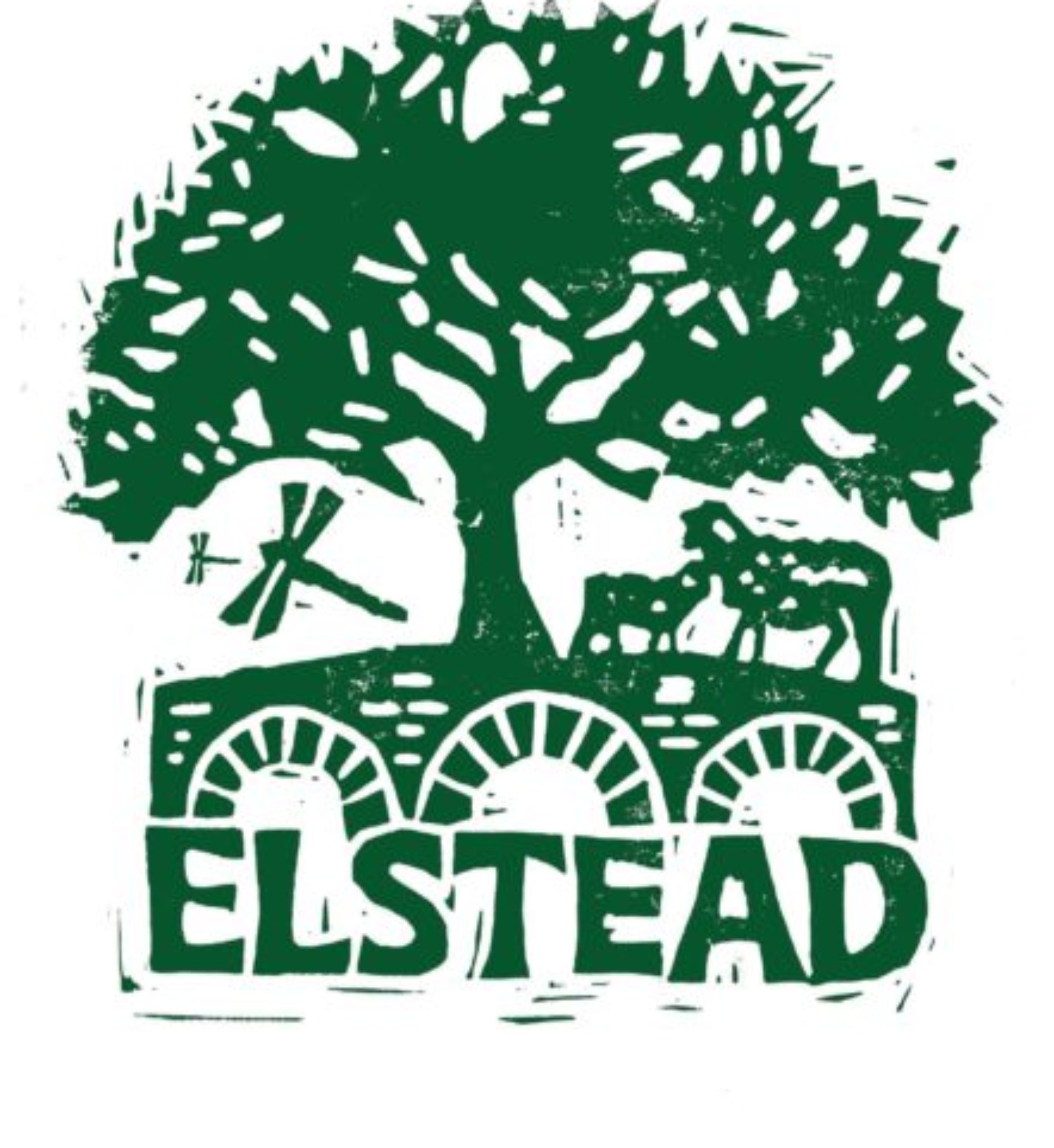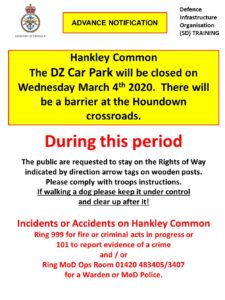Residents might already be aware of the planning application for Bonfire Hill that is currently live on the Waverley Borough Council planning website. Residents are welcome to submit their comments on this application – please copy and paste the following link where you will find the application http://planning360.waverley.gov.uk/planning/search-applications#VIEW?RefType=GFPlanning&KeyNo=422598&KeyText=Subject.
A copy of the Parish Council’s response may be found listed in the documents part of the application, and below.
A letter from Elstead Parish Council to Surrey County Council regarding drainage issues can be found here – https://elsteadvillage.co.uk/parish-council/letter-from-elstead-parish-council-re-bonfire-hill-drainage-issues/
Anyone wishing to submit their comments is reminded to ensure that they do it before 17th April 2020.
BONFIRE HILL – PC RESPONSE TO PLANNING APPLICATION WA/2020/0363
1 Elstead parish Council strongly objects to this application for 30 dwellings on land at Bonfire Hill, Elstead.
2 The application site is an area of elevated land dominating the centre of Elstead village. It is outside the Settlement Area, within the Metropolitan Green Belt and within the Surrey Hills AONB.
3 The National Planning Policy Framework (NPPF) makes it clear that housing development within the Green Belt is generally inappropriate, except in very special circumstances.
4 The WBC Local Plan Part 1 (LPP1) requirement for the Elstead and Weyburn Neighbourhood Plan (NHP) area is to provide land for a minimum of 160 new dwellings over the LPP1 period (2013-32). This particular site was put forward as one of those to be considered in the process of determining which sites within the NHP area would be most appropriate for housing development. In all, 9 sites were assessed by the NHP team’s professional advisers, Aecom. The Bonfire Hill site was the only one of the 9 sites which was deemed to be in the ‘red’ category (ie entirely unsuitable for development), principally on account of its adverse landscape impact. Aecom stated that the site was:
‘Highly visible from surrounding properties the north, east and west and would be highly visible from the wider AONB/AGLV due to its location on a plateau’.
5 The latest draft of the Elstead and Weyburn NHP was published for consultation on 11 March 2020 (this draft supersedes the earlier draft published in 2018, prior to the release of the latest version of the NPPF). The new draft NHP identifies 3 sites within the NHP area which would more than meet the outstanding requirement for new dwellings (63 in all, taking account of dwellings already built and outstanding planning consents). These do not include this application site.
6 The NHP draft (para 5.18) also states:
‘Bonfire Hill is a locally important green space in terms of landscape character, historical value and recreational value. Any development on Bonfire Hill will not be supported’.
This provision was included to reflect the views of local residents on their response to the NHP ‘Big Survey’ of 2015, which indicated that large numbers of parishioners wanted to see Bonfire Hill protected and definitely not developed.
7 Further, Bonfire Hill, in its entirety, is designated in the NHP draft as Local Green Space (policy ESDQ4), on account of its dominant position in the village, its accessibility (crossed by two ROWs) and its recreational use (extensively used for tobogganing in snowy weather).
8 The promoters of the site suggest that ‘very special circumstances’ should apply as they are putting forward the land to be used as a ‘Rural Exception Site’ to provide affordable housing, in accordance with the provisions of para 145 f) of the NPPF. However, this provision is for ‘limited’ (ie small-scale) schemes which are designed to meet a defined local need. Elstead Parish Council would strongly argue that this proposal (for 30 new dwellings) is neither limited nor does it meet an established local need..
9 The latest Housing Needs Assessment (HNA) for Elstead and the neighbouring parish of Peper Harow, carried out in 2019, identified that there was a current demand from within the 2 parishes for 22 new affordable homes (15 for rent and 7 for shared ownership). 21 affordable homes are about to be provided at the new Water Meadow Place development within the NHP area. In addition, it can reasonably be expected that 30% of the 63 new homes referred to in para 5 above will be affordable. This would mean that at least 39 affordable homes will be provided within the NHP area before very long, 17 more than those identified as needed in the HNA. The Parish Council suggests that WBC planners should also consult with WBC Housing Department officers about the prospect of further provision for affordable homes within the Borough’s own estate in the parish.
10 It is significant also that the draft NHP does not itself identify any additional need for affordable homes, nor does it include specific policies for this purpose (beyond those included in LPP1).
11 The provision of a significantly greater number of affordable homes in the village could therefore only be justified in order to meet the requirement for such homes outside the NHP area. This is not the purpose of the Rural Exception Site policy. Nor would it represent a sustainable housing policy. Inevitably, the occupiers of the dwellings would probably need to work outside the village and because of the paucity of public transport they would of necessity have to use private cars. It should also be noted that homes provided under the Rural Exception Site provisions would be additional to the number (160) allocated under LPP1. So the effect would be to increase the Elstead and Weyburn allocation from a minimum of 160 to a minimum of 190 (an uplift of nearly 20%).
12 The Parish Council notes that the promoters have commissioned a drainage survey of the site. This indicates that water infiltration techniques are deemed to be unsuitable (ie there is no prospect that the development can be accommodated without causing surface water flooding) and the only means of draining surface water from the proposed development area is therefore to channel it into the foul drainage system. This is unusual for Elstead and is inherently undesirable, given the number of springs on the site (the names of the surrounding roads – Springfield, Springhill, Springhaven – give a clue).
13 It is doubtful from the correspondence submitted by the developer that Thames Water have themselves undertaken any on-site investigation to assess the capacity of the local foul drainage system to cope with what in wet weather would be a substantial increase in volume. The developer’s own estimate of the maximum amount of surface water to be channelled into the sewer system (4 litres per second) appears to be based purely on the area of land involved. It takes no account of the specific hydrology of the site. Local evidence suggests the run-off in wet weather will be much greater than that predicted. During the recent wet period, one resident on the land below Bonfire Hill was obliged to deploy pumps to remove surface water at a rate of 5.6 litres per second over an extended period – and this was from just one of the many springs on the Bonfire Hill site. Surely it must be preferable to build new dwellings on land which is not susceptible to such hazards.
14 The Parish Council notes that because the proposed new dwellings would be classed as ‘affordable’, no Community Infrastructure Levy would be payable. As a result, a large part of the affordable element would be funded by the local taxpayer, even though the grant of consent would provide a large uplift in the capital value of the land. At the same time, it is proposed that an area of land on the site would be made over to the Parish Council for community use. There is however no proposed financial provision for the continued maintenance of this land, the cost of which would therefore fall upon Elstead parishioners. The Parish Council accordingly asks that in the unlikely event of consent being granted for the application, a S106 agreement should be put in place to provide a capital sum sufficient to provide for the maintenance of the transferred land in perpetuity.
15 For all the above reasons, these proposals have generated strong opposition within the local community. It is significant that in their comments on community engagement the promoters have made no reference to this.
16 In summary therefore, Elstead Parish Council objections are as follows:
- The application is not policy compliant, in that the site lies within the Green Belt and the AONB
- The site has already been assessed by Aecom and deemed to be ‘unsuitable’ for development on account of the adverse landscape impact
- The development would not be consistent with the draft Elstead and Weyburn NHP, specifically para 5.18 and policy ESDQ4 (Local Green Space)
- The proposals do not meet the requirements of the Rural Exception Site provision in the NPPF
- The proposals do not adequately address the drainage problems of the site and the solution proposed (disposal of surface water into the sewer) is unsatisfactory and inadequate.
The Parish Council would be very happy to discuss and expand upon these points in a meeting with Waverley planners.

